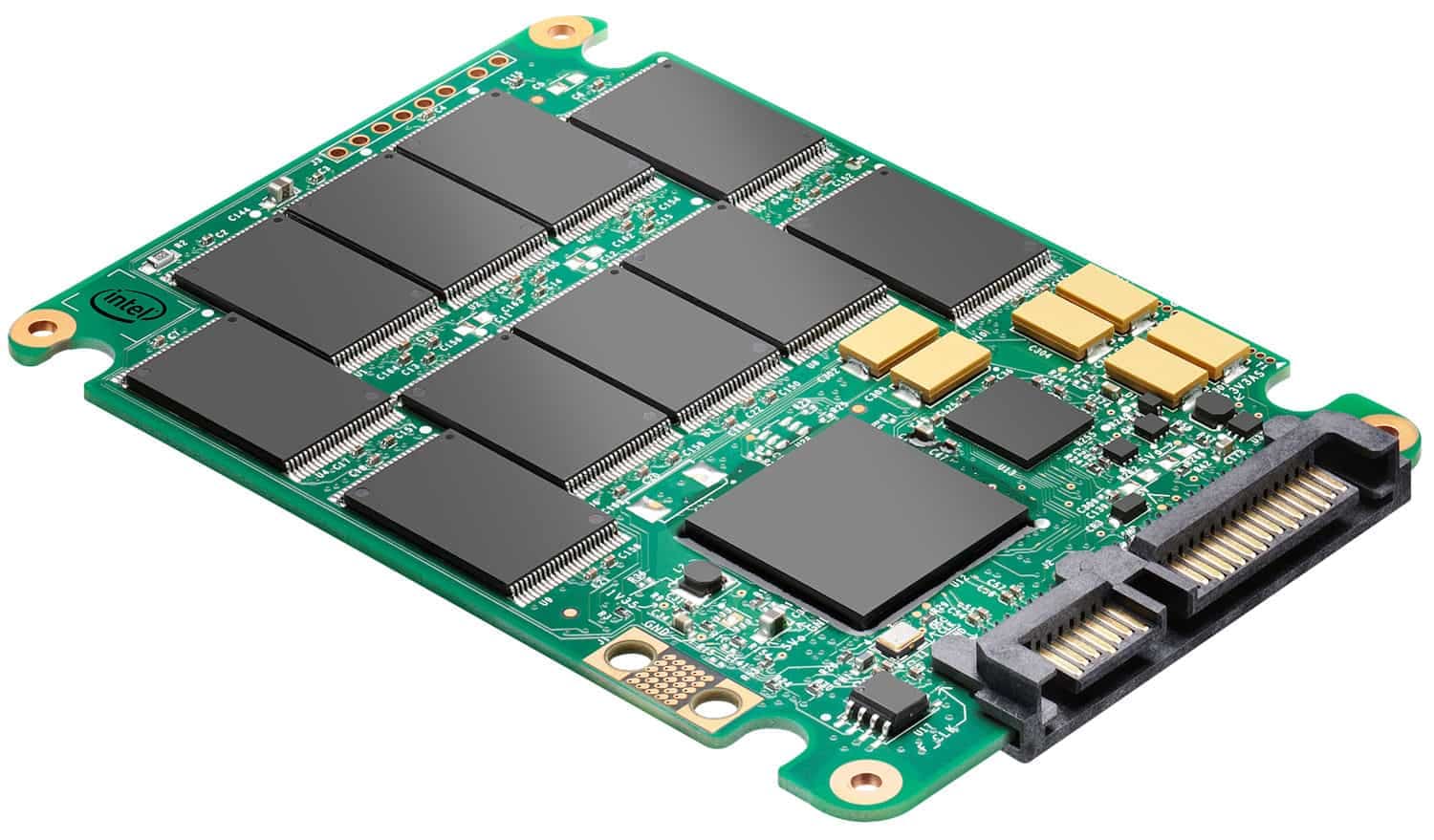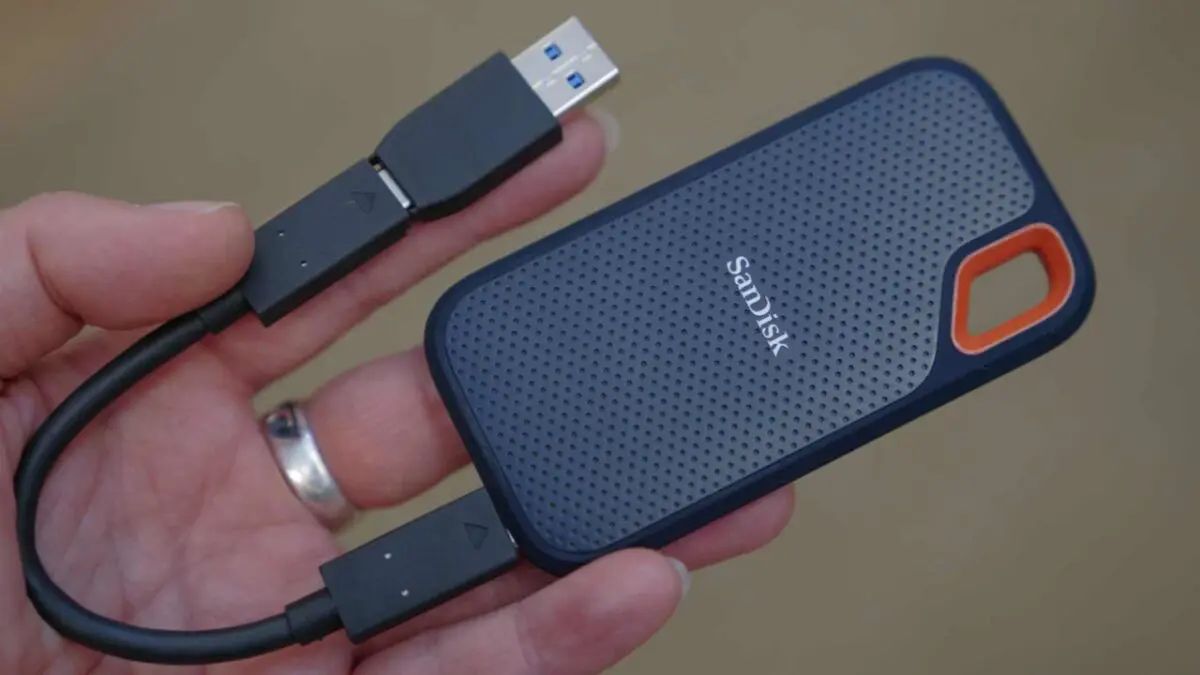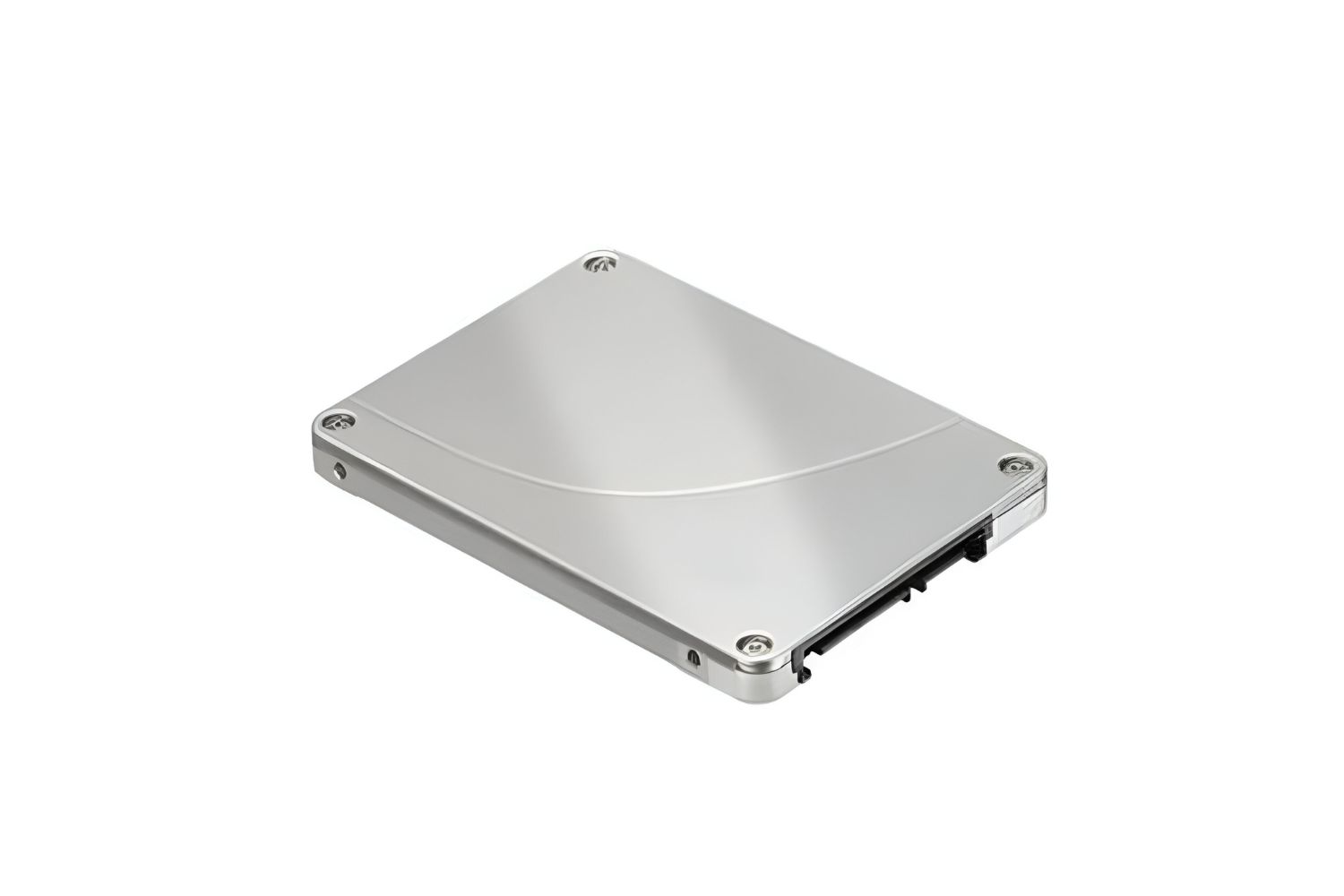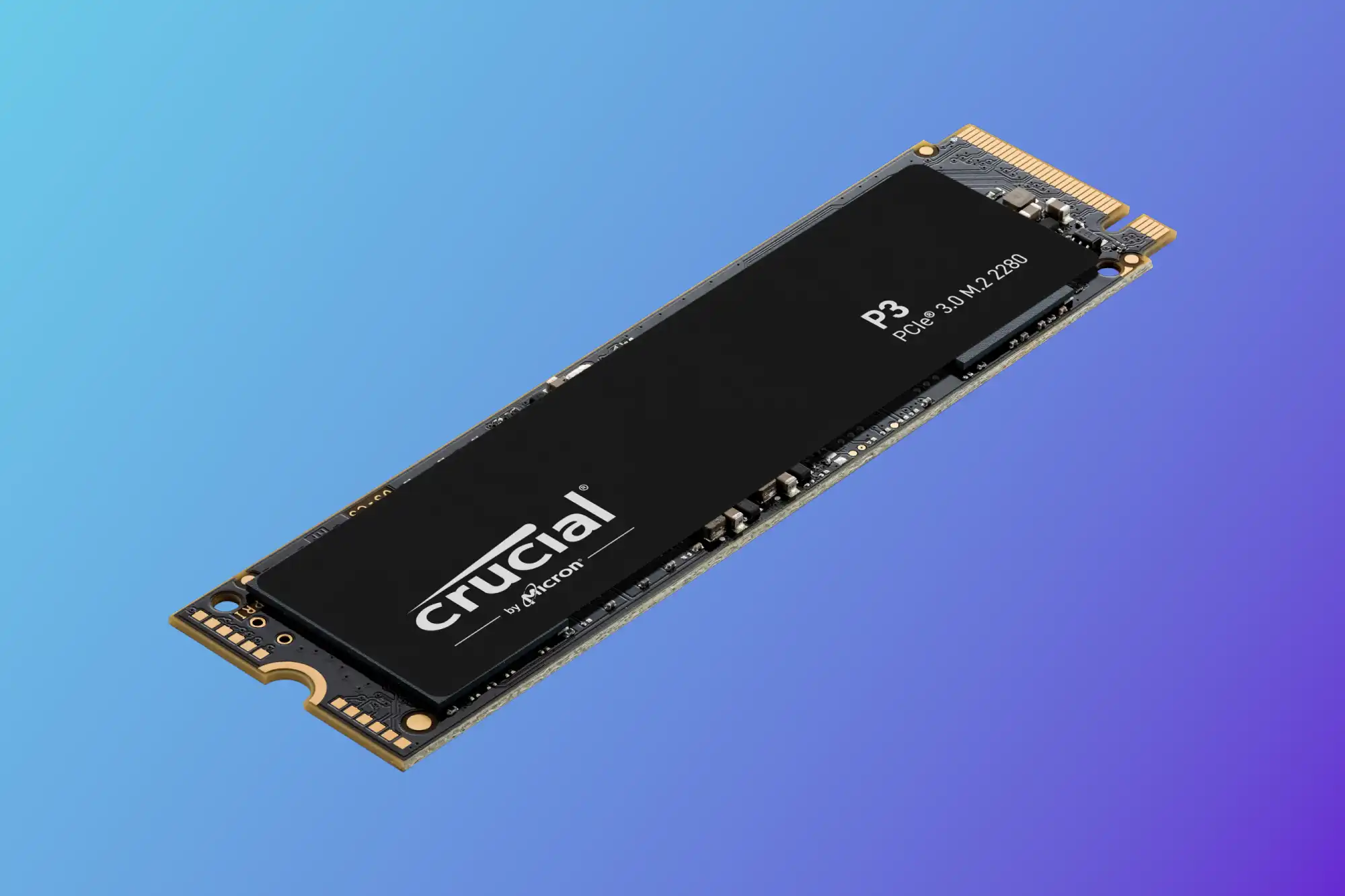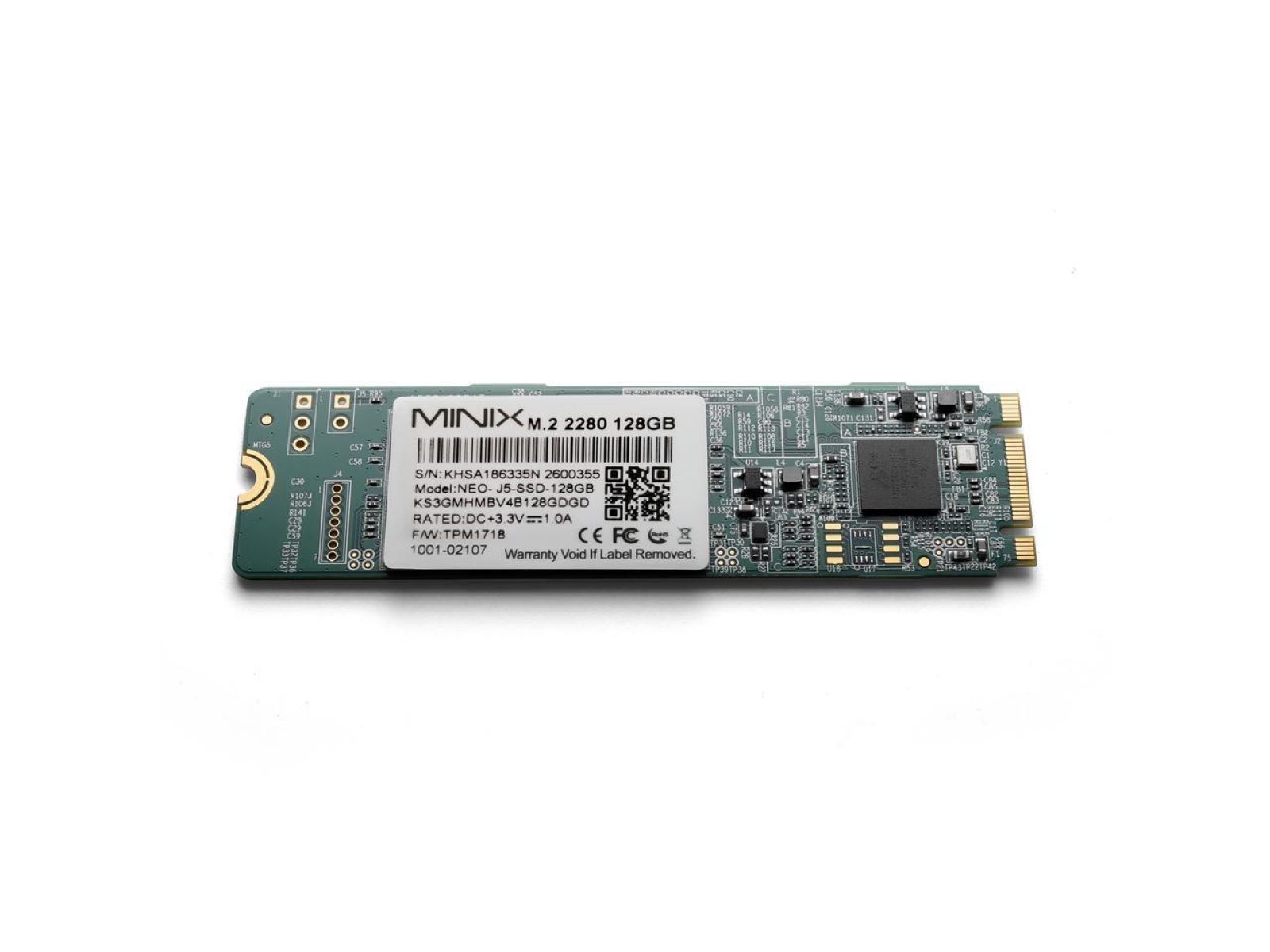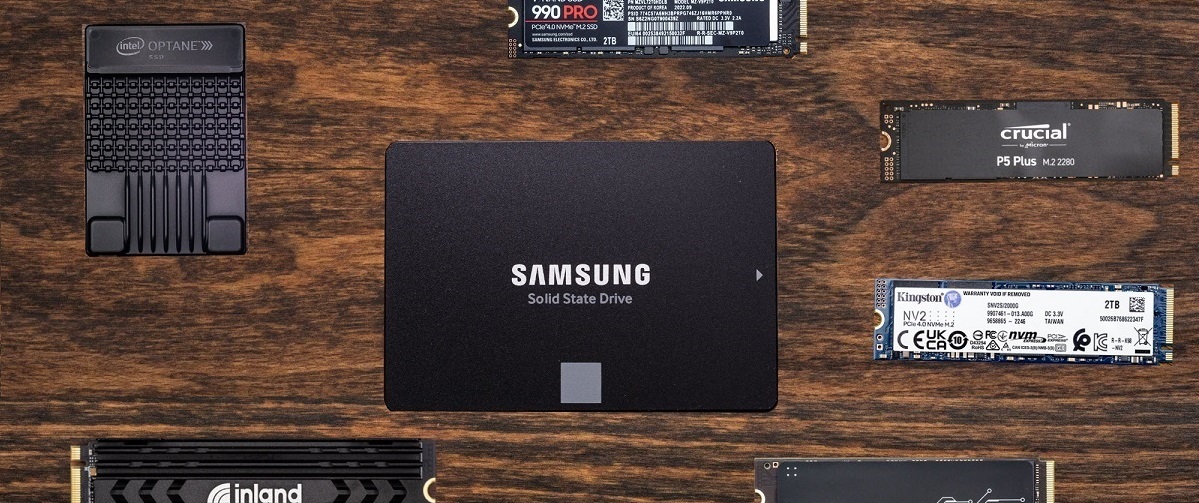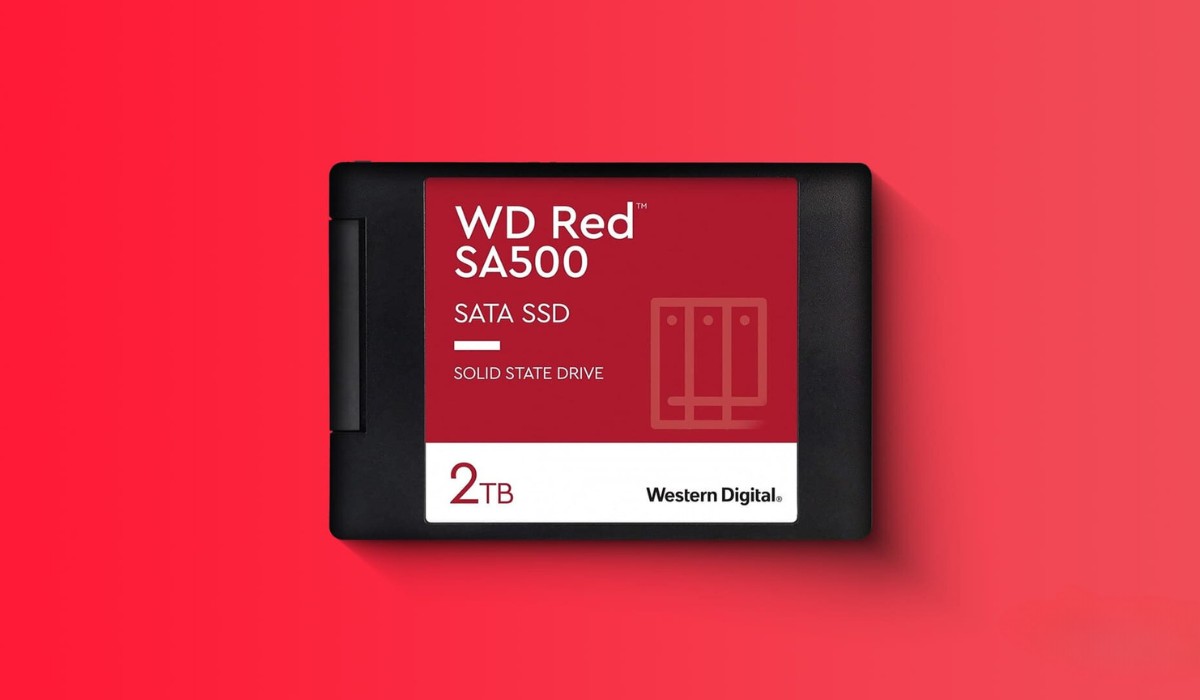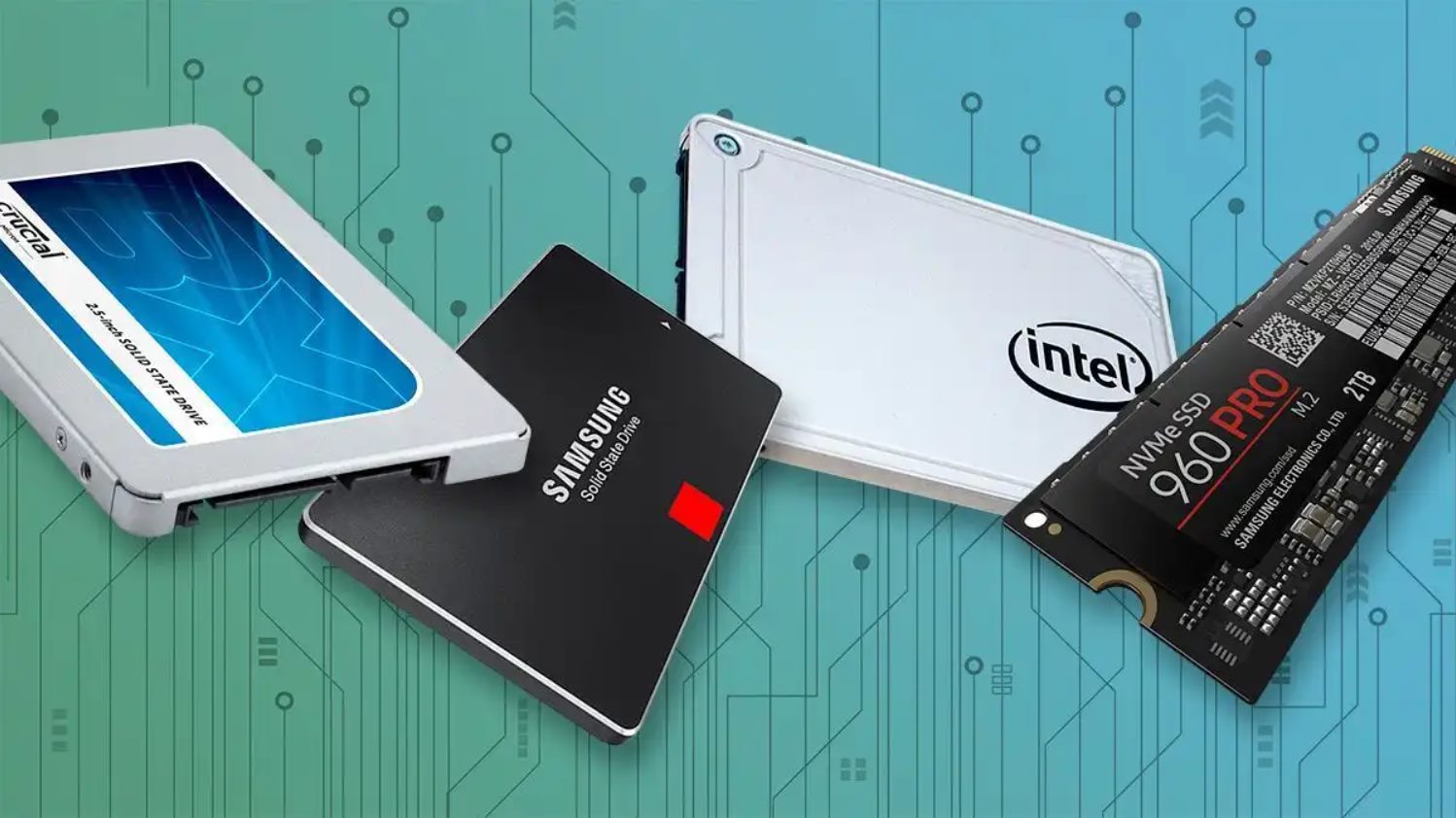Introduction
The Solid State Drive (SSD) has become increasingly popular due to its faster speed, higher durability, and enhanced reliability compared to traditional Hard Disk Drives (HDDs). However, many users wonder about the lifespan of an SSD and how long it can last before needing to be replaced. In this article, we will delve into the factors that affect the longevity of an SSD and provide tips to maximize its lifespan.
An SSD is a type of storage device that uses flash memory to store data persistently. Unlike HDDs, which use mechanical components like spinning disks and read/write heads, SSDs have no moving parts, making them more resistant to physical damage and mechanical failure. This makes SSDs ideal for portable devices like laptops and tablets.
While SSDs offer many advantages, it is important to understand that they have a limited lifespan, typically measured in the number of Program/Erase (P/E) cycles. Each flash memory cell in an SSD has a finite number of write cycles it can endure, after which it may become unreliable or cease to function. However, modern SSDs have made significant advancements in durability and can last for several years of regular use.
Several factors come into play when determining the lifespan of an SSD. These include the write endurance of the drive, the type of NAND flash memory used, the controller technology and firmware, and the usage patterns of the SSD. In the following sections, we will explore these factors in more detail and provide insights into how to maximize the lifespan of your SSD.
Factors Affecting the Lifespan of an SSD
Several factors play a significant role in determining the lifespan of an SSD. Understanding these factors can help you make informed decisions about your usage patterns and take necessary precautions to maximize the longevity of your SSD.
1. Write Endurance: The write endurance of an SSD refers to the number of write cycles a flash memory cell can endure before it starts to degrade. Each time data is written to an SSD, the voltage applied to the NAND flash memory cells causes slight damage. Over time, this damage accumulates, eventually leading to cell failure. SSDs typically have a specified endurance rating, which indicates the total amount of data that can be written to the drive before it is likely to fail. Higher-end SSDs tend to have higher write endurance compared to budget-friendly options.
2. NAND Flash Memory Cells: The type and quality of the NAND flash memory cells used in an SSD can have a significant impact on its lifespan. There are different types of NAND flash memory, including Single-Level Cell (SLC), Multi-Level Cell (MLC), and Triple-Level Cell (TLC). SLC NAND offers the highest endurance and reliability but is more expensive. MLC and TLC NAND are more common in consumer-grade SSDs and offer lower endurance but at a more affordable price point.
3. Overprovisioning: Overprovisioning is a technique used by SSD manufacturers to reserve a portion of the drive’s capacity for wear leveling and garbage collection. By allocating extra empty space, the SSD can distribute write operations more evenly across its memory cells and perform better maintenance tasks. Overprovisioning can help improve SSD performance and extend its lifespan.
4. Controller Technology and Firmware: The controller is a crucial component in an SSD that manages data transfers, wear leveling, error correction, and other critical functions. A high-quality controller with advanced firmware can significantly impact the lifespan and performance of an SSD. It is important to choose SSDs from reputable manufacturers that invest in research and development to provide reliable, efficient controllers.
5. Wear-Leveling and Garbage Collection: Wear-leveling is a technique used by SSDs to evenly distribute write operations across the memory cells, preventing certain cells from wearing out faster than others. Garbage collection is another process that SSDs use to consolidate deleted data and free up space for new writes. Efficient wear-leveling and garbage collection algorithms can help prolong the lifespan of an SSD by minimizing cell wear and improving the overall performance.
By considering these factors and adopting good practices like monitoring SSD health, using power loss protection, and regularly updating firmware, you can maximize the lifespan of your SSD and enjoy its benefits for years to come.
Write Endurance of an SSD
Write endurance is a crucial factor to consider when evaluating the lifespan of an SSD. It refers to the number of Program/Erase (P/E) cycles that a flash memory cell can endure before it becomes unreliable or fails. Each time data is written to an SSD, the voltage applied to the NAND flash memory cells causes a small amount of physical damage. Over time, this damage accumulates, leading to a decrease in the cell’s ability to reliably store data.
SSD manufacturers provide a measure of write endurance in terms of Terabytes Written (TBW) or Drive Writes Per Day (DWPD). TBW indicates the total amount of data that can be written to the drive over its lifespan, while DWPD specifies the number of times the drive’s capacity can be overwritten every day before it is expected to fail. For example, an SSD with a TBW rating of 500TBW can endure 500 terabytes of data writes over its lifetime.
The write endurance of an SSD depends on various factors, such as the type of NAND flash memory used and the controller technology. Single-Level Cell (SLC) NAND offers the highest write endurance, typically ranging from 50,000 to 100,000 P/E cycles. Multi-Level Cell (MLC) NAND has a lower endurance, ranging from 3,000 to 10,000 P/E cycles. Triple-Level Cell (TLC) NAND provides even lower endurance, typically ranging from 500 to 3,000 P/E cycles.
It is important to note that the actual write endurance a user experiences may vary based on usage patterns. SSDs employ various techniques to mitigate write-related issues, such as wear-leveling and overprovisioning. Wear-leveling ensures that writes are distributed evenly across the memory cells, preventing premature wear of specific cells. Overprovisioning reserves a portion of the SSD’s capacity for improved wear-leveling and maintenance tasks.
Additionally, SSDs use sophisticated controller technology and firmware to optimize performance and endurance. These controllers employ advanced algorithms like error correction codes, data compression, and real-time monitoring to maximize the lifespan of the SSD. Choosing SSDs from reputable manufacturers known for their high-quality controllers can significantly impact the write endurance and overall lifespan of the drive.
To ensure you are maximizing the write endurance of your SSD, it is advisable to monitor the drive’s health regularly. Many SSD manufacturers provide software tools that allow users to monitor important parameters like temperature, wear level, and remaining lifespan. By staying proactive and taking necessary precautions, such as updating firmware and avoiding excessive writes, you can extend the lifespan of your SSD and enjoy its reliable performance for years to come.
NAND Flash Memory Cells
NAND flash memory is the technology used in solid-state drives (SSDs) to store and retrieve data. These memory cells are fundamental to the functioning of an SSD and are responsible for its ability to maintain data even without power. Understanding the different types of NAND flash memory cells and their characteristics can provide insight into the lifespan and performance of an SSD.
NAND flash memory cells are based on the principles of floating-gate transistors. Each cell consists of a floating-gate MOSFET (Metal-Oxide-Semiconductor Field-Effect Transistor) structure that can hold an electrical charge. The presence or absence of the charge represents the binary states of data, either a 0 or a 1.
The two primary factors that impact the characteristics of NAND flash memory cells are their level of density and their ability to retain charge over time. These factors determine the capacity and reliability of an SSD. There are primarily four types of NAND flash memory cells:
1. Single-Level Cell (SLC): SLC NAND flash memory cells store one bit of data per cell. They offer high performance, endurance, and reliability. SLC NAND has the highest write endurance, typically ranging from 50,000 to 100,000 Program/Erase (P/E) cycles. Due to the lower density of data stored per cell, SLC SSDs are more expensive and have lower capacities compared to other types.
2. Multi-Level Cell (MLC): MLC NAND flash memory cells store two bits of data per cell. They offer a good balance between cost efficiency and performance. MLC SSDs have a lower endurance than SLC, ranging from 3,000 to 10,000 P/E cycles. They are commonly found in consumer-grade SSDs and provide higher capacities at a more affordable price point.
3. Triple-Level Cell (TLC): TLC NAND flash memory cells store three bits of data per cell, making them more cost-effective in terms of storage density. TLC SSDs have lower endurance compared to SLC and MLC, typically ranging from 500 to 3,000 P/E cycles. They are commonly used in consumer-grade SSDs where cost per gigabyte is a primary consideration.
4. Quad-Level Cell (QLC): QLC NAND flash memory cells store four bits of data per cell, offering even higher storage density at a more cost-effective price. However, QLC SSDs have the lowest endurance among the NAND flash memory types, often ranging from 100 to 1,000 P/E cycles. They are commonly utilized in entry-level consumer SSDs.
It’s important to note that as the density of NAND flash memory cells increases, the endurance and performance typically decrease. Higher-density cells are more susceptible to wear and degrade faster over time. However, advancements in technology and the development of techniques like pseudo-SLC (pSLC) and QLC NAND with improved endurance have made it possible to expand the capabilities of these memory cells.
When choosing an SSD, it is crucial to consider the type of NAND flash memory used in the drive. SLC SSDs offer the highest endurance and reliability but come at a premium cost. MLC, TLC, and QLC SSDs provide varying levels of endurance, capacity, and cost-effectiveness, making them suitable for different user requirements and budgets.
Understanding the characteristics of NAND flash memory cells can help users make informed decisions when purchasing an SSD, balancing factors such as performance, endurance, capacity, and price to meet their specific needs.
Types of NAND Flash Memory
NAND flash memory is a key component of solid-state drives (SSDs) and plays a significant role in determining their performance, capacity, and overall reliability. There are various types of NAND flash memory, each offering unique characteristics and trade-offs. Understanding these types can help users choose the right SSD for their specific needs.
1. Single-Level Cell (SLC): SLC NAND flash memory is the original and most robust type of NAND. It stores one bit of data per cell, resulting in faster read and write speeds, higher endurance, and more reliable performance. SLC memory cells have the highest endurance, typically ranging from 50,000 to 100,000 Program/Erase (P/E) cycles. Due to the lower density of data stored per cell, SLC SSDs tend to have lower capacities and higher cost compared to other types of NAND.
2. Multi-Level Cell (MLC): MLC NAND flash memory stores two bits of data per cell, offering higher storage densities at a more affordable price point compared to SLC. While MLC SSDs have a lower endurance, typically ranging from 3,000 to 10,000 P/E cycles, they still provide a good balance between performance, capacity, and cost. MLC NAND is commonly used in consumer-grade SSDs.
3. Triple-Level Cell (TLC): TLC NAND flash memory stores three bits of data per cell, making it more cost-effective in terms of storage density compared to SLC and MLC. TLC SSDs have even lower endurance, typically ranging from 500 to 3,000 P/E cycles. They are popular in consumer-grade SSDs due to their higher capacity and more affordable price per gigabyte. However, TLC NAND is more susceptible to wear, which can impact longevity and sustained performance.
4. Quad-Level Cell (QLC): QLC NAND flash memory stores four bits of data per cell, offering the highest storage density among the NAND types. With increased density, QLC SSDs provide even higher capacity at a more cost-effective price. However, QLC NAND has the lowest endurance among the NAND types, typically ranging from 100 to 1,000 P/E cycles. QLC SSDs are commonly found in entry-level consumer SSDs.
In recent years, advancements in NAND flash memory technology have led to the development of specialized variations:
5. Pseudo-SLC (pSLC): Pseudo-SLC, or SLC caching, is a technique used in some MLC and TLC NAND flash memory SSDs. It allows a portion of the memory cells to be treated as SLC, providing faster write speeds and higher endurance for frequently accessed data. By leveraging this approach, SSDs can offer improved performance and endurance characteristics comparable to SLC drives at a lower cost.
6. QLC Dual-Cell (DLC): QLC Dual-Cell is a variation of QLC NAND that aims to improve endurance and performance. It stores two bits of data per cell, similar to MLC, effectively doubling the endurance compared to regular QLC NAND. This technology bridges the gap between QLC and MLC by trading off some capacity for increased performance and higher endurance.
When choosing an SSD, it is essential to consider the type of NAND flash memory used and its impact on performance, endurance, and cost. SLC SSDs offer the highest performance and endurance but are more expensive. MLC, TLC, and QLC SSDs provide varying levels of performance, capacity, and affordability, making them suitable for different use cases and budgets. Understanding these types can help users make informed decisions when selecting an SSD that best fits their requirements.
SLC vs MLC vs TLC NAND Flash
When it comes to NAND flash memory used in solid-state drives (SSDs), there are three primary types: Single-Level Cell (SLC), Multi-Level Cell (MLC), and Triple-Level Cell (TLC). Each type has its own characteristics, including performance, endurance, and cost, which make them suitable for different applications and user requirements.
1. Single-Level Cell (SLC): SLC NAND flash memory is known for its exceptional performance, highest endurance, and reliability. With SLC, each memory cell stores only one bit of data. This results in faster read and write speeds, lower power consumption, and superior longevity. SLC SSDs typically have an endurance rating ranging from 50,000 to 100,000 Program/Erase (P/E) cycles, making them ideal for mission-critical applications where performance and reliability are paramount. However, SLC SSDs have a higher cost per gigabyte compared to other NAND types due to their lower density.
2. Multi-Level Cell (MLC): MLC NAND flash memory stores two bits of data per cell, doubling the data density compared to SLC. This increased density allows for higher storage capacities at a more affordable price point. While MLC SSDs have lower endurance, typically ranging from 3,000 to 10,000 P/E cycles, they offer a good balance between performance, capacity, and cost. MLC SSDs are commonly found in consumer-grade applications and business use cases that require a cost-effective solution with reasonable endurance and performance.
3. Triple-Level Cell (TLC): TLC NAND flash memory stores three bits of data per cell, further increasing the storage density compared to MLC. With TLC, SSDs can offer even higher capacities at a more budget-friendly price. However, the higher density comes with a trade-off in terms of endurance. TLC SSDs typically have endurance ratings ranging from 500 to 3,000 P/E cycles. This makes them suitable for everyday computing tasks and consumer applications that prioritize capacity and affordability over extreme endurance.
Each NAND type has its own advantages and trade-offs. SLC provides the highest performance, endurance, and reliability but at a higher cost. MLC strikes a balance between performance, endurance, and cost, making it a popular choice for a wide range of applications. TLC offers the highest density and affordability, but with lower endurance. Therefore, choosing the right NAND type depends on the specific use case and priorities of the user.
It’s important to note that advancements in technology have allowed for the development of techniques like SLC caching for MLC and TLC SSDs. These techniques can improve performance and simulate the characteristics of SLC SSDs for frequently accessed data, while still offering the storage density advantages of MLC and TLC NAND flash memory.
Ultimately, SLC, MLC, and TLC NAND flash memory cater to different needs and budgets. It is essential to consider factors such as workload, endurance requirements, performance expectations, and budget constraints when selecting an SSD. Consulting with a knowledgeable professional or reviewing detailed specifications can help users make informed decisions and obtain an SSD that meets their specific needs.
Pseudo-SLC and QLC NAND Flash
In addition to the traditional Single-Level Cell (SLC), Multi-Level Cell (MLC), and Triple-Level Cell (TLC) NAND flash memory, there are two specialized variations worth noting: Pseudo-SLC (pSLC) and Quad-Level Cell (QLC). These variations offer unique characteristics that cater to specific needs and strike a balance between performance, endurance, and cost.
1. Pseudo-SLC (pSLC): Pseudo-SLC, also referred to as SLC caching, is a technique used in certain MLC and TLC NAND flash memory SSDs. With pSLC, a portion of the memory cells is treated as SLC, allowing for improved write performance and higher endurance for frequently accessed data. By leveraging this technique, SSDs can provide faster performance during write-intensive operations and offer endurance characteristics comparable to SLC SSDs at a lower cost. The pSLC approach optimizes the available storage capacity while maintaining improved performance and durability for critical data.
2. Quad-Level Cell (QLC): QLC NAND flash memory represents a further progression in storage density by storing four bits of data per memory cell, allowing for higher storage capacities than traditional MLC and TLC. QLC offers a more cost-effective solution, making it suitable for consumer-grade applications where affordability and higher capacities are prioritized. However, QLC NAND typically has lower endurance compared to SLC, MLC, and TLC, with endurance ratings ranging from 100 to 1,000 Program/Erase (P/E) cycles. This lower endurance should be taken into consideration when planning for workloads that involve heavy write operations, as it may impact the lifespan of the SSD.
Both pSLC and QLC technologies aim to enhance performance and affordability in different ways. While pSLC maximizes the use of MLC/TLC NAND by intelligently caching frequently written data as SLC, QLC pushes storage density further at a more cost-effective price point. However, it’s important to consider the specific use case and workload requirements when choosing between pSLC and QLC SSDs.
SSDs utilizing pSLC can provide a good balance between performance and cost, making them suitable for applications that require accelerated performance for write-intensive tasks, such as gaming, content creation, and database applications. On the other hand, QLC SSDs can be an excellent choice for consumers with large storage capacity needs for tasks such as storing media libraries, backups, and general daily computing activities.
It’s worth noting that QLC SSDs may employ techniques such as Dynamic SLC Caching, which allocate a portion of the QLC flash memory as a pseudo-SLC buffer, improving write performance for short bursts of data. These techniques aim to mitigate some of the limitations associated with QLC NAND and enhance the overall user experience.
Overall, both pSLC and QLC NAND flash memory variations provide unique features to meet specific user needs. While pSLC offers improved performance and endurance compared to standard MLC and TLC, QLC offers higher storage capacities at a more affordable price. Understanding the differences between these technologies can help users make informed decisions when selecting an SSD that aligns with their specific requirements.
Overprovisioning
Overprovisioning is a technique used by SSD manufacturers to allocate a portion of the drive’s capacity for internal use, rather than exposing it to the user. This reserved space plays a crucial role in improving the performance, endurance, and overall lifespan of an SSD.
One of the key benefits of overprovisioning is enhanced wear-leveling and garbage collection. Wear-leveling is a mechanism that spreads write operations evenly across the available NAND flash memory cells. By reserving some space for wear-leveling, overprovisioning allows the SSD controller to distribute writes more effectively, preventing specific cells from wearing out faster than others. This leveling of write activity helps to prolong the lifespan of an SSD by reducing the strain on individual cells and extending the overall endurance of the drive.
Garbage collection is another important process that benefits from overprovisioning. When data is deleted or modified on an SSD, it leaves behind invalid pages that need to be erased to free up space for new data. Garbage collection is the process of consolidating these invalid pages and performing block erasures. Overprovisioning enables the SSD controller to have more unused space available for garbage collection, allowing for more efficient data management and preventing performance degradation due to fragmented or partially filled blocks.
Additionally, overprovisioning can improve performance by providing more space for the SSD controller to allocate as SLC cache in MLC or TLC NAND-based drives. SLC cache temporarily treats a portion of the NAND flash memory as SLC, which offers faster write speeds compared to MLC or TLC. With overprovisioning, the SSD controller has greater flexibility to allocate a larger cache, resulting in improved write performance for bursty workloads.
Overprovisioning also contributes to the overall reliability and stability of an SSD. By reserving space for wear-leveling, garbage collection, and other maintenance tasks, the SSD controller can effectively manage and maintain the internal operations of the drive. This can help prevent performance degradation, data corruption, and other issues that can occur over time due to excessive wear or insufficient free space.
It’s important to note that the amount of overprovisioning can vary between different SSD models and manufacturers. Higher-end SSDs often have a greater percentage of overprovisioned space, providing more headroom for wear-leveling and garbage collection. However, the drawback is that the usable capacity of the drive is slightly reduced as a result of the reserved space.
When considering an SSD, it is advisable to choose a drive with a reasonable amount of overprovisioning to ensure optimal performance and durability. While the specific details of overprovisioning may not be user-accessible, its benefits are integral to the smooth operation and longevity of the SSD.
Controller Technology and Firmware
The controller is a critical component in an SSD that plays a crucial role in managing data transfers, data integrity, wear leveling, error correction, and other essential functions. It acts as the brain of the drive, ensuring optimal performance and reliability. The controller technology and firmware used in an SSD significantly impact its overall performance, endurance, and lifespan.
The quality and efficiency of the controller technology directly influence the SSD’s ability to handle various tasks and optimize its operations. Advanced controllers use sophisticated algorithms and features to improve overall performance and reliability. These advanced algorithms include error correction codes (ECC), data compression, and real-time monitoring.
1. Error Correction Codes (ECC): ECC is a crucial feature in SSD controllers that helps to detect and correct errors that may occur during data transfers. It ensures data integrity and minimizes potential issues caused by bit errors in NAND flash memory. By accurately detecting and correcting errors, ECC algorithms play a vital role in maintaining the reliability and accuracy of stored data.
2. Data Compression: Data compression is a technique used in some SSD controllers to reduce the amount of data that needs to be written to the memory cells. By compressing the data before writing it, the controller can effectively optimize storage space and improve overall performance. Data compression can also help increase the lifespan of an SSD by reducing the number of write operations and minimizing cell wear.
3. Real-Time Monitoring: The controller’s ability to monitor various parameters, such as temperature, read/write errors, and wear level, is crucial for maintaining the health and performance of an SSD. Real-time monitoring allows the controller to adapt its operations and make informed decisions to mitigate potential issues and ensure consistent performance. It also enables the SSD to provide valuable data for diagnostic purposes and SSD health monitoring tools.
The firmware, which is the software embedded within the SSD controller, also plays a vital role in SSD performance and reliability. Firmware updates can introduce improvements, fix bugs, and enhance compatibility with different systems and applications. It is important to keep the firmware up to date to take advantage of optimizations and improvements provided by the SSD manufacturer.
Choosing an SSD with a high-quality controller technology and firmware is essential. Reputable SSD manufacturers invest in research and development to continuously improve their controller technology and firmware to deliver optimal performance, endurance, and reliability. They also provide regular firmware updates to address any issues and improve compatibility with new software and hardware platforms.
The controller technology and firmware of an SSD directly impact its overall performance, endurance, and reliability. When selecting an SSD, it is crucial to consider drives from reputable manufacturers that offer advanced controller technology and regularly update their firmware to ensure a stable and efficient driving experience.
Wear-Leveling and Garbage Collection
Wear-leveling and garbage collection are two important processes employed by solid-state drives (SSDs) to manage data and improve performance and longevity. These techniques play a critical role in optimizing the use of NAND flash memory cells and maintaining the overall health of the SSD.
Wear-Leveling: Wear-leveling is a mechanism used by SSDs to distribute write operations evenly across the available NAND flash memory cells. By distributing writes across different cells, wear-leveling prevents specific cells from wearing out faster than others. This technique helps to extend the lifespan of an SSD by reducing the strain on individual cells and ensuring that all cells are utilized evenly. Wear-leveling ensures that the cells wear out simultaneously, maximizing the endurance of the SSD.
SSDs employ various wear-leveling algorithms to achieve efficient distribution of write operations. Dynamic wear-leveling algorithms monitor the usage of each cell and dynamically adjust the writes to spread the workload evenly. Static wear-leveling algorithms allocate static regions of memory to handle more frequent writes, ensuring that no single portion of the SSD is subject to excessive wear. Combined, these techniques help to prolong the lifespan of an SSD by distributing the write workload across the entire drive.
Garbage Collection: When files are deleted or modified on an SSD, it leaves behind empty blocks called invalid pages. To maintain optimal performance, SSDs employ a process called garbage collection to reclaim these invalid pages and keep the drive organized. Garbage collection consolidates the individual invalid pages scattered across various blocks into larger, contiguous blocks that can be erased and reused.
Garbage collection is crucial to prevent performance degradation due to fragmented or partially filled blocks. By reclaiming and consolidating these blocks, the SSD can ensure that write operations are performed on larger, more efficiently utilized blocks. This helps to maintain consistent write performance and prevent unnecessary write amplification, where multiple writes are required to modify a single logical write due to fragmented blocks.
SSDs use algorithms to intelligently manage garbage collection, executing it during periods of low drive activity to minimize disruption to normal operations. Trim commands, such as the TRIM command in the ATA protocol or similar commands in other interfaces, inform the SSD of deleted data, allowing the drive to prioritize cleaning and reclaiming invalid pages more effectively.
Efficient wear-leveling and garbage collection are essential for maintaining the performance and lifespan of an SSD. These processes help maximize the use of available NAND flash memory cells, mitigate the effects of wear, and ensure the longevity and reliability of the drive.
When selecting an SSD, it is important to consider the quality and effectiveness of wear-leveling and garbage collection mechanisms. SSDs from reputable manufacturers incorporate advanced algorithms and techniques to optimize performance and longevity, providing a reliable storage solution for a wide range of applications.
TRIM and SSD Performance
TRIM is a feature that has a significant impact on the performance and lifespan of solid-state drives (SSDs). It is an essential command that helps SSDs maintain optimal performance, mitigate write amplification, and prolong the overall lifespan of the drive.
When a file is deleted or modified on a traditional hard disk drive (HDD), the operating system simply marks the space previously occupied by the file as available for use. However, SSDs work differently. When files are deleted on an SSD, the drive does not immediately erase those blocks. Instead, it marks them as invalid so they can be reclaimed during the garbage collection process.
This delayed recycling of blocks can negatively impact SSD performance. Each time new data is written to the drive, the SSD must perform additional erase cycles to overwrite the invalid blocks. This process, known as write amplification, can lead to decreased performance and increased wear on the SSD.
This is where TRIM comes into play. TRIM is an ATA command that allows the operating system to inform the SSD which blocks are no longer in use. When the operating system deletes a file and sends a TRIM command, the SSD can proactively erase the corresponding blocks, making them immediately available for new write operations.
By using the TRIM command, SSDs can efficiently manage and allocate memory resources, reducing write amplification and improving performance. TRIM helps to minimize unnecessary erase cycles and prevents the degradation of write performance over time.
In addition to improving performance, TRIM also helps to extend the overall lifespan of an SSD. By promptly erasing invalid data blocks, TRIM reduces the wear on NAND flash memory cells. It prevents unnecessary write operations on blocks that are no longer in use, effectively reducing the amount of wear and tear on the SSD’s memory cells. This wear reduction can contribute to the long-term durability and reliability of the drive.
It’s important to note that TRIM support is crucial for the effective operation of an SSD. Both the SSD and the operating system must support TRIM for it to function properly. In most modern operating systems, TRIM is supported by default, but it is still worth verifying its status and enabling it if necessary.
SSDs offer exceptional performance and durability, and the TRIM command plays a vital role in maintaining their optimal performance and extending their lifespan. Enabling TRIM ensures that the SSD can efficiently manage its memory resources, reduce write amplification, and mitigate the wear on NAND flash memory cells. As a result, enabling TRIM can lead to improved performance, prolonged SSD lifespan, and enhanced overall user experience.
Power Loss Protection
Power loss protection is an important feature in solid-state drives (SSDs) that helps safeguard data integrity and prevent potential data loss or corruption in the event of a sudden power outage or disruption. This feature ensures that data being written to the SSD is not lost or left in an inconsistent state, mitigating the risk of data corruption and maintaining the reliability of the drive.
SSDs with power loss protection utilize different mechanisms to ensure the proper handling of data during power loss scenarios:
1. Capacitor-Based Power Backup: Some SSDs have onboard capacitors that provide temporary power to the drive in the event of a power loss. These capacitors store enough energy to allow the drive to complete any unfinished data writes and perform necessary housekeeping tasks like flushing volatile cache data to non-volatile storage. This ensures that data being written to the drive is persisted and that the drive remains in a consistent state, minimizing the risk of data corruption.
2. Firmware and Embedded Power Loss Protection Algorithms: SSDs with power loss protection often incorporate specific firmware algorithms that help manage power loss situations effectively. These algorithms monitor power conditions and make real-time decisions to ensure data integrity. They prioritize completing pending write operations, commit any volatile data to non-volatile storage, and restore the SSD to a consistent state during power restoration. These advanced algorithms play a crucial role in preventing data corruption and maintaining the reliability of the SSD.
Power loss protection is especially vital for applications and environments where data integrity is critical, such as enterprise servers and industrial systems. Unexpected power losses can lead to data inconsistencies and potentially cause system failures or data loss. The presence of power loss protection in an SSD provides an added layer of data protection against these risks.
It is important to note that power loss protection is not a standard feature in all SSDs. When considering an SSD for critical applications, it is advisable to select drives that explicitly mention power loss protection in their specifications or product descriptions.
Additionally, it is recommended to follow best practices for power management, such as using an uninterruptible power supply (UPS) to provide a reliable power source and implementing proper shutdown procedures in case of prolonged power outages. These measures can further enhance the overall data protection and system reliability in power loss scenarios.
Power loss protection is a valuable feature that helps ensure the integrity and reliability of data stored in SSDs. By preventing data corruption and maintaining the consistency of the drive during power loss events, this feature provides users with increased confidence in the security and durability of their data.
SSD Health Monitoring Tools
SSD health monitoring tools are software applications that allow users to monitor the performance, wear level, and overall health of their solid-state drives (SSDs). These tools provide valuable insights into the status of the SSD, helping users make informed decisions about maintenance, performance optimization, and potential issues that may arise.
SSD health monitoring tools offer a range of features and metrics to assess the health and performance of the drive:
1. Drive Health Status: SSD monitoring tools provide an overview of the drive’s overall health, displaying indicators such as the estimated remaining lifespan, wear level, and current condition. These indicators give users an understanding of the drive’s current state and help identify potential concerns.
2. Performance Monitoring: Monitoring tools track the performance metrics of the SSD, including read and write speeds, response times, and access latency. By monitoring these parameters, users can identify any degradation in performance over time or spot any anomalies that may require attention.
3. Temperature Monitoring: SSD temperature monitoring helps users keep an eye on the drive’s temperature to prevent overheating, which can impact performance and longevity. Monitoring tools provide real-time temperature readings and alerts to help users take necessary measures to maintain optimal operating temperatures.
4. S.M.A.R.T. Attributes: S.M.A.R.T. (Self-Monitoring, Analysis, and Reporting Technology) is a monitoring system embedded in most modern SSDs. SSD health monitoring tools can access and interpret various S.M.A.R.T. attributes to provide insights into drive health and potential issues. These attributes include metrics such as read error rate, program/erase cycles, uncorrectable error count, and more.
5. Error Reporting: Monitoring tools provide error reporting features that notify users about errors encountered during read/write operations or other drive-related issues. These reports help users identify and address potential problems that may affect the overall reliability and performance of the SSD.
6. Data Integrity Checks: Some SSD monitoring tools offer data integrity checks by verifying the integrity of stored data. This feature helps identify potential data corruption or errors early on, allowing for timely actions such as data backup or migration to prevent data loss.
SSD health monitoring tools serve as proactive measures to keep SSDs in optimal condition and maximize their lifespan. They provide users with invaluable insights into performance, health, and potential issues that might otherwise go unnoticed without monitoring. By monitoring these parameters, users can take necessary actions such as firmware updates, timely backups, or retirement of drives as needed.
It’s important to note that SSD health monitoring tools should be obtained from reputable sources and be compatible with the specific SSD make and model being used. SSD manufacturers often provide their own proprietary tools or recommendations for third-party tools that are known to work well with their drives.
Regularly monitoring the health of SSDs using dedicated software helps ensure their continued reliability, performance, and longevity, providing users with peace of mind and maximizing the return on their investment in solid-state storage.
Signs of SSD Failure
While solid-state drives (SSDs) are generally known for their reliability and durability, they can still experience failures over time. Recognizing the signs of an impending SSD failure is important as it allows users to take appropriate action to protect their data and replace the failing drive if necessary. Here are some common signs to be aware of:
1. Slow Performance: One of the early signs of an SSD failure is a significant decrease in performance. If you notice your SSD taking longer to boot up, open files, or perform read/write operations, it could be indicative of an underlying issue. Sluggish performance can be caused by various factors, including bad sectors, controller malfunctions, or issues with the drive’s firmware.
2. Frequent System Crashes: If your system consistently experiences crashes or blue screen errors that cannot be attributed to other causes, it could be due to an SSD failure. A failing SSD may cause system instability as it struggles to read or write data correctly. Keep an eye out for repeated crashes during system boots or while running resource-intensive tasks.
3. Disappearing or Inaccessible Data: Files and folders mysteriously disappearing or becoming inaccessible can point to underlying issues with the SSD. If you encounter missing data even though you haven’t intentionally deleted or moved it, there could be data corruption or bad sectors on the drive. In such cases, it is advisable to immediately back up your important files and assess the health of the SSD.
4. Read/Write Errors: Frequent read or write errors when accessing files or performing disk-intensive tasks are clear indicators of an SSD problem. When an SSD starts to fail, it may struggle to read or write data correctly, resulting in error messages or failed data transfers.
5. Drive Not Recognized: If your SSD is not being recognized by the operating system or BIOS, it may suggest a severe hardware issue. This can be caused by a faulty drive controller, damaged flash memory chips, or loose connections. Before concluding that the SSD has failed, ensure that all connections are secure and attempt to connect the drive to another system to rule out compatibility or system configuration issues.
6. Unusual Noise or Overheating: Unusual noises, such as clicking or grinding sounds coming from the SSD, can indicate mechanical failures. Additionally, excessive heat emanating from the drive, even with proper cooling, might denote a failing SSD. SSDs generate minimal heat compared to traditional hard drives, so any excessive or abnormal heat output should be investigated further.
If you experience any of these signs of SSD failure, it is crucial to take immediate action. Back up your important data to a separate storage device as soon as possible to avoid potential data loss. Consider using diagnostic tools provided by the SSD manufacturer or third-party software to assess the health of the drive. In cases where the SSD is confirmed to be failing, consult with a professional or contact the manufacturer for repair or replacement options.
Regularly backing up your SSD and monitoring its health can help you detect failures early and take proactive measures to safeguard your data. SSD failures can occur unexpectedly, so it is essential to be prepared and vigilant to protect your valuable information.
Tips to Extend the Lifespan of an SSD
While solid-state drives (SSDs) are known for their durability, implementing proper care and maintenance can help extend their lifespan even further. Here are some tips to maximize the longevity of your SSD:
1. Enable TRIM: Ensure that TRIM is enabled on your SSD. TRIM allows the operating system to inform the SSD about deleted data, enabling the drive to optimize performance and minimize write amplification. TRIM helps prevent unnecessary write operations and maintains the efficiency of the SSD over time.
2. Avoid Overfilling: Leaving some free space on your SSD is essential for its performance and lifespan. Avoid filling the drive to its maximum capacity, as this can lead to increased wear and potentially affect the overall reliability of the SSD. Aim to keep at least 10-20% of the drive’s capacity free for optimal performance and longevity.
3. Manage Large and Frequent Writes: While SSDs can handle a high number of writes, minimizing large and frequent writes can help extend their lifespan. For example, avoiding unnecessary large file transfers or regularly moving large amounts of data on the SSD can reduce wear on the flash memory cells.
4. Minimize Unnecessary Disk Defragmentation: Unlike traditional hard disk drives, SSDs do not require regular disk defragmentation. In fact, frequent defragmentation can cause unnecessary write operations on the SSD, potentially reducing its lifespan. Modern operating systems automatically detect SSDs and disable defragmentation accordingly, so there is usually no need to manually defragment your SSD.
5. Keep Operating System and Firmware Up to Date: Regularly updating your operating system and SSD firmware is crucial for optimal performance and compatibility. Firmware updates from the SSD manufacturer often include performance optimizations, bug fixes, and enhancements that can improve the lifespan and reliability of the drive. Check the SSD manufacturer’s website periodically for any available updates.
6. Maintain Proper Cooling: Proper cooling is important for preventing overheating, which can negatively impact the performance and lifespan of an SSD. Ensure that your system’s cooling system is working efficiently, keeping the overall temperature within recommended operating limits. Adequate airflow and good ventilation in your computer case are essential to maintain optimal operating temperatures for the SSD.
7. Backup Your Data Regularly: Regardless of the type of storage device used, regular data backups are essential. While SSDs are generally reliable, unexpected failures can occur. Implementing a regular backup routine ensures that your data is protected and can be easily restored in the event of drive failure or other data loss scenarios.
8. Avoid Frequent System Hibernation: Frequent system hibernation can cause excessive writing to the SSD’s storage. If unnecessary, consider disabling hibernation or using sleep mode instead. Sleep mode consumes less power and does not involve extensive data writing, ultimately reducing wear on the SSD.
Implementing these tips can help maximize the lifespan of your SSD and maintain its performance over time. By following these best practices, you can continue to enjoy the benefits of fast and reliable storage for years to come.
Conclusion
Understanding the factors that affect the lifespan of solid-state drives (SSDs) and adopting best practices can help users maximize the longevity and performance of their SSDs. Key factors such as write endurance, NAND flash memory types, overprovisioning, controller technology, wear-leveling, and power loss protection all play a significant role in determining the lifespan and reliability of an SSD.
By carefully considering SSD specifications and selecting drives that align with specific needs and budgets, users can find the optimal balance between performance, capacity, and endurance. Enabling features such as TRIM and keeping firmware and operating systems up to date help maintain the efficiency and integrity of the SSD over time.
In addition, managing SSD usage patterns, avoiding overfilling, minimizing unnecessary defragmentation, and practicing regular data backups can all contribute to extending the lifespan of an SSD. Proper cooling and maintaining system health are crucial for preventing overheating and ensuring optimal performance of the drive.
Monitoring the health of an SSD using dedicated software tools enables users to detect potential issues early on and take proactive measures to safeguard data. Being aware of signs of SSD failure and taking prompt action in the event of failure or data corruption is essential to prevent data loss and minimize disruption.
In conclusion, by understanding the factors affecting SSD lifespan and implementing these tips, users can significantly extend the longevity and reliability of their solid-state drives. Adhering to these best practices, selecting high-quality drives, and proactively monitoring SSD health ensure a smooth and reliable computing experience while maximizing the return on investment in SSD technology.







